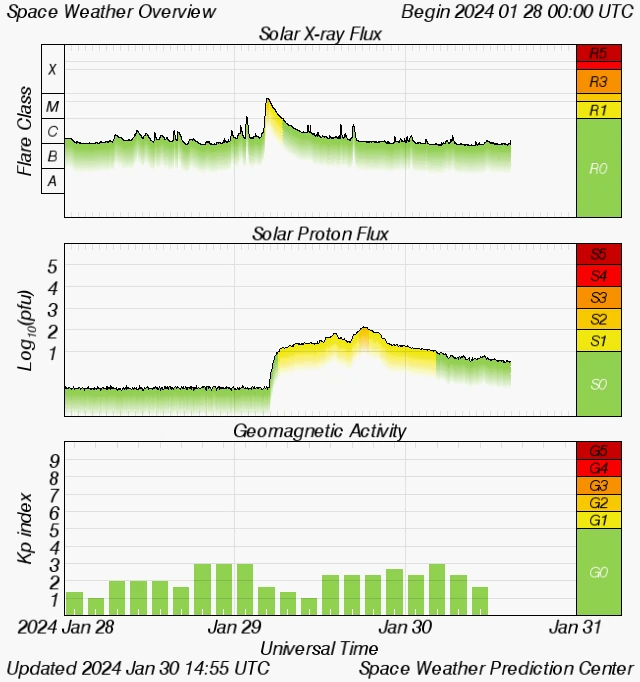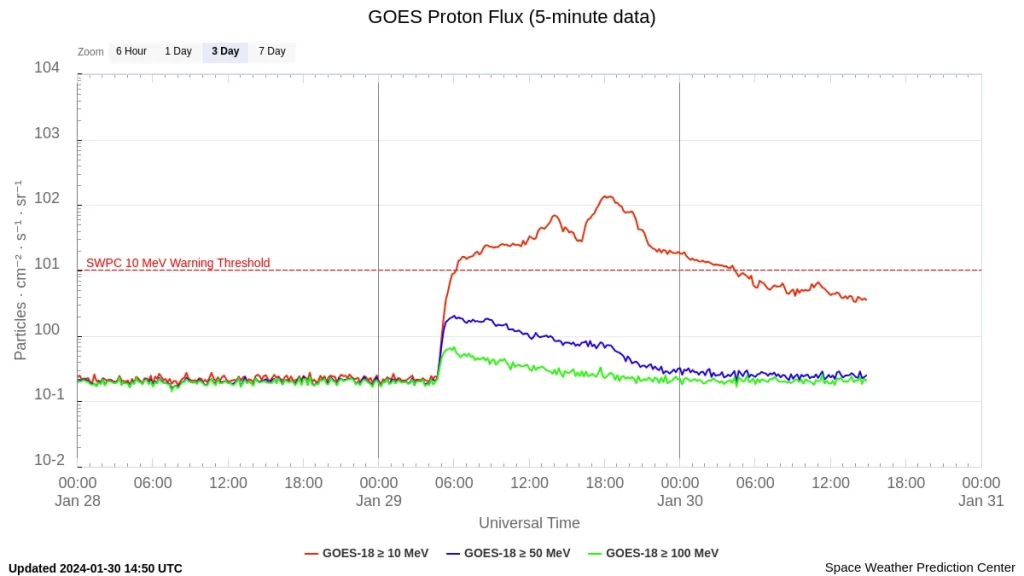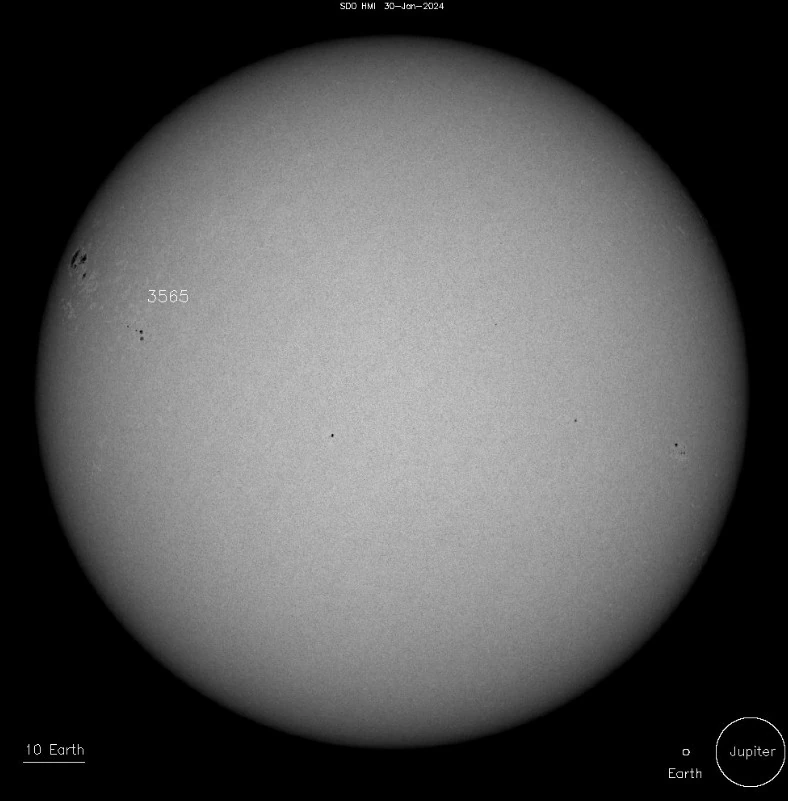Following the M6.7 solar flare from Active Region 3559 on January 29, 2024, enhanced proton levels were recorded, with the greater than 10 MeV reaching the S2 – Moderate threshold and greater than 100 MeV peaking at 0.67 pfu. The storm is now subsiding.
The aftermath of the M6.7 solar flare that erupted from Active Region 3559 has resulted in enhanced proton levels in space. This event, which began at approximately 04:55 UTC on January 29, has led to notable increases in proton flux at two energy levels: greater than 10 MeV and greater than 100 MeV.
Specifically, the greater than 10 MeV protons reached the S2 – Moderate threshold at 17:40 UTC on January 29, peaking at 137 pfu (particle flux units). Meanwhile, the greater than 100 MeV protons peaked at a maximum of 0.67 pfu before declining back to background-like levels.
In addition to the proton flux, the greater than 2 MeV electron flux was observed at normal to moderate levels in 24 hours to 12:30 UTC on January 30, indicating a heightened state of space weather activity following the solar flare.



The greater than 10 MeV proton flux is expected to persist through the rest of January 30 at or near the S1 – Minor threshold. A gradual decrease back to background levels is anticipated through January 31.
Similarly, the greater than 2 MeV electron flux is projected to continue at normal to moderate levels through the end of January 31.
S2 – Moderate solar radiation storms occur on average 25 times per solar cycle. Under S2 conditions, passengers and crew in high-flying aircraft at high latitudes may be exposed to elevated radiation risk. Infrequent single-event upsets are possible in satellite operations. Small effects on HF propagation through the polar regions is expected and navigation at polar cap locations could be affected.
Over the past 24 hours, solar activity returned to low levels with only C-class flares. Region 3559 (N29W97, Eao/beta) — the source of the aforementioned M6.7 flare — rotated mostly out of view.


Regions 3566 (S13W61, Bxo/beta) and 3567 (N20E70, Eao/beta-gamma) were numbered during this period but were relatively quiet. It should be noted to take Region 3567’s classification lightly at this time as proper analysis is still difficult due to foreshortening effects.
New, simple spots near S09W20 and S12E10 were noted, but remain unnumbered at this time as we await USAF observatory reports.
Multiple CMEs from eruptive prominence activity were observed during the period, but none are anticipated to be Earth-directed at this time.
There’s only a small chance for M-class flares through February 1. Probabilities then further decrease as AR 3559 rotates beyond the northwestern limb.
References:
1 Forecast Discussion – Issued: 2024 Jan 30 1230 UTC – Prepared by the U.S. Dept. of Commerce, NOAA, Space Weather Prediction Center
Featured image credit: NOAA/SWPC
If you value what we do here, create your ad-free account and support our journalism.
Strong M9.0 solar flare erupts from geoeffective Region 3576
Saturday, February 10, 2024
Major X3.3 solar flare erupts behind the SW limb, S2 – Moderate solar radiation storm
Friday, February 9, 2024
Long-duration M5.1 solar flare erupts from Region 3575
Wednesday, February 7, 2024
Long-duration M4.2 solar flare erupts from Region 3575
Tuesday, February 6, 2024
M6.7 solar flare erupts from Region 3559, producing S2 – Moderate solar radiation storm
Monday, January 29, 2024
Solar filament eruption produces Earth-directed CME
Tuesday, January 23, 2024
Complex filament eruption produced Earth-directed CME, impact expected late January 22
Sunday, January 21, 2024
